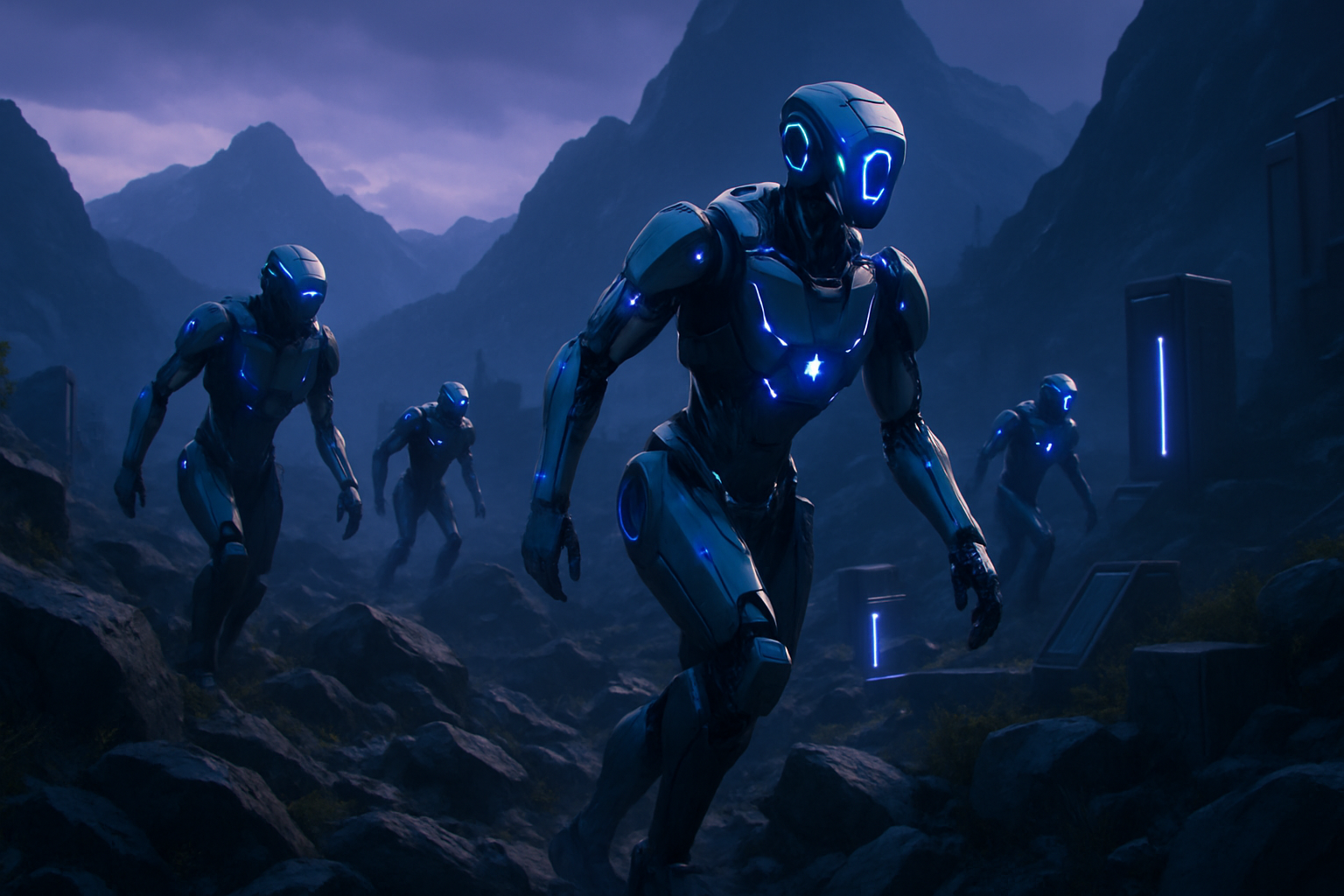Innovation revolutionizes our relationship with machines. The human sensory perception inspires the design of adaptive robots capable of navigating difficult terrains. The fusion of vision, touch, and sound transforms how these machines understand their environment. It becomes essential to equip these entities with a perception similar to that of humans to ensure their effectiveness. Addressing the challenges of navigation in complex environments requires a multidimensional approach that integrates advanced technologies and artificial intelligence. This advancement is crucial for enabling robots to overcome unpredictable obstacles and explore inaccessible areas.
Innovation in Robotic Navigation
Researchers at Duke University have developed a revolutionary framework called WildFusion. This system merges different types of perception to allow robots to operate in complex outdoor environments. Thanks to this innovation, robots acquire a human-like understanding, enhancing their ability to navigate potentially hazardous terrains.
Human Inspiration for Advanced Perception
The human mind uses a multitude of senses to interpret the environment. The integration of touch, sound, and vision forms the foundation upon which WildFusion relies. Humans detect textures under their feet, listen to the sound of branches, and utilize their balance to avoid falls. Until now, robots have had to rely solely on visual information. This new system aims to transform this approach.
How WildFusion Works
WildFusion relies on the integration of several sensors. The system employs an RGB camera, a LiDAR sensor, inertial sensors, as well as contact microphones and tactile sensors. Each component helps create a map of an environment by considering its geometric details, color, and acoustic vibrations. This multimodal approach stands out for its ability to interpret vibrations and touches.
Field Evaluation
The WildFusion tests took place in Eno River State Park, North Carolina. The results were promising, allowing a robot equipped with the system to successfully navigate through numerous areas, such as dense forests and gravel paths. Researchers were pleased to find that the technology improves the predictability of navigability and the robot’s decision-making.
The Future of Robotic Navigation
The future development strategy for WildFusion involves integrating additional sensors, such as those that detect heat and humidity. These additions aim to enrich the robot’s perception, enabling it to interact in an even more sophisticated manner with its environment. This system could become crucial in various applications, such as disaster response and autonomous exploration.
The Importance of the Technological Challenge
The ability to develop robotic systems that operate in unpredictable environments represents a major challenge. Most robots have found it difficult to function outside controlled contexts. Flexibility and adaptability become invaluable assets in seeking solutions in diverse terrains. WildFusion aims to meet this requirement by allowing robots to navigate confidently, even in bewildering situations.
Frequently Asked Questions
How does the WildFusion system help robots navigate difficult terrains?
The WildFusion system integrates multiple sensory modalities, including vision, touch, sound, and balance, to enable robots to perceive their environment in a manner similar to humans. It merges data from various sources, such as cameras, contact microphones, and tactile sensors, to create an enriched representation of the environment.
What are the main technologies used in WildFusion?
WildFusion employs a combination of sensors, including RGB cameras, LiDAR, inertial sensors, contact microphones, and tactile sensors, to gather various types of sensory data and analyze the terrain’s characteristics in real time.
Why is it important for robots to have a perception similar to that of humans?
Robots equipped with human-like perception can make smarter decisions and navigate unpredictable and unstructured environments, such as forests or disaster zones, which enhances their effectiveness and safety.
What challenges do robots face in navigating difficult terrains?
Traditional robots often rely solely on visual data, making them vulnerable when there are no clear paths or predictable landmarks. Uneven surfaces, natural obstacles, and weather conditions can also complicate their navigation.
How do vibrations and touch improve the accuracy of robots in navigation?
The vibrations captured by contact microphones and the force data provided by tactile sensors allow robots to perceive subtle details of the terrain, such as soil firmness or the presence of mud, helping them adapt their steps in real time.
What impact can WildFusion have on research and rescue missions?
WildFusion enables robots to navigate more confidently in hard-to-reach areas, thus improving their efficiency during search and rescue missions in rugged or dangerous terrains.
Can WildFusion be used in other applications outside of forests?
Yes, the WildFusion system has extensive application potential, including scenarios such as autonomous exploration, remote infrastructure inspection, and disaster response in varied terrains.






